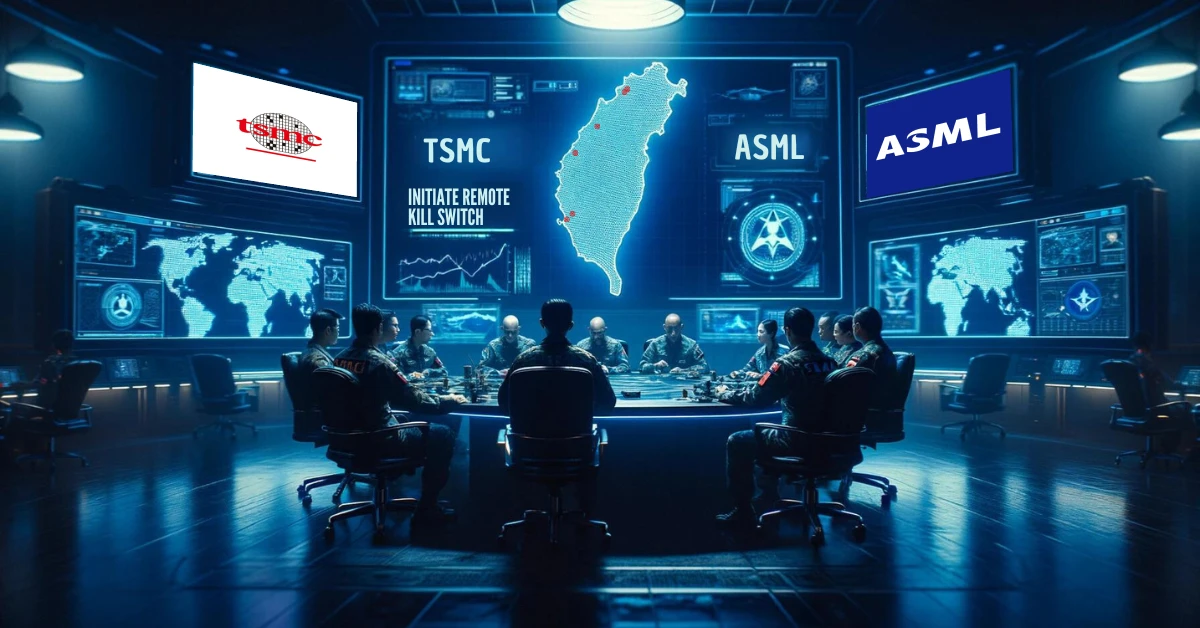It feels like the world is currently facing conflict and war on all sides. One conflict that has been unresolved for years and has been simmering for years is the China-Taiwan conflict. China claims the right to Taiwan, while Taiwan sees itself as an independent sovereign state. Taiwan has a special position worldwide, because without Taiwan there would be no highly developed processors. A war with Taiwan could restrict access to high technology for years to come.
Now information has leaked out that there is a kill switch, an emergency shutdown of the EVU lithography machines that produce the chips on the wafers.
This raises big questions: who decides? How does it work and when will it be used?
What is a kill switch?
A kill switch is a technical solution for emergency shutdown, there is no set way in which it has to work, but the aim of the emergency shutdown is to ensure that it is no longer possible to start and boot up, this serves to protect the user of the device in a normal emergency.
TSMC and ASML
As a group, ASML has a virtual monopoly on this technology; only its EVU lithography machines are capable of producing the nanometer-sized structures of the latest generation of chips, at least as of 2024.
The main customer for these machines is TSMC, Taiwan Semiconductor Manufacturing Company.
One of these lithography machines costs 380 million US dollars. Not exactly a bargain, but it also produces high technology.
As geopolitical tensions in Asia increase, it is clear that if China attacks Taiwan and steals or reverse engineers the machines, it would cause global upheaval, because China would then control the production of high technology, which is not a good idea from a Western political point of view.
What does this kill switch look like?
Many analysts and strategists will now be thinking about this. There are 2 solutions here, on the software side or on the hardware side.
With the software, I could imagine that the control software is overwritten, so you can start the machine but cannot work without the control software, which is an important part alongside the machine itself. Without drivers, control and the exact calculation or even if the software signature is not recognized, the machine would be unusable.
An alternative would be an IP block, i.e. whenever the machine starts, the IP address is checked and transmitted to ASML or TSMC, while you can falsify the IP address locally to the software, this is not possible when you send requests, at least to my knowledge this is not possible. However, since this method does not render the software itself unusable, it is more of a possible addition than a protective function.
On the hardware side, there are only 2 options in my opinion, either a controlled explosion of the hardware or a controlled overload and shutdown of the protective devices, which would mean the destruction of the on-board components.
I can't imagine blowing it up, even if it were the best solution, because the risk of it happening in production and then being controlled remotely is too great. Furthermore, with a remote kill switch there is a risk that hackers could find it and blackmail ASML or TSMC into triggering it.
But I don't want it to be exclusive, we are talking about an industry worth billions here, where the destruction of such a machine is more likely to be accepted than losing the quasi-monopoly.
I would therefore rely on the protective functions of the controller being switched off and hardware damage occurring, as well as the software being overwritten to make data recovery impossible.
Conclusion
What will happen when and how will probably only be known if there is an attack on Taiwan, which I hope will not happen and common sense will prevail. But you can't rule it out and if you consider that this insider information has leaked into specialist circles, there may be more to it than you might think.
Further information





